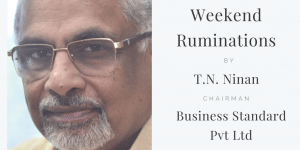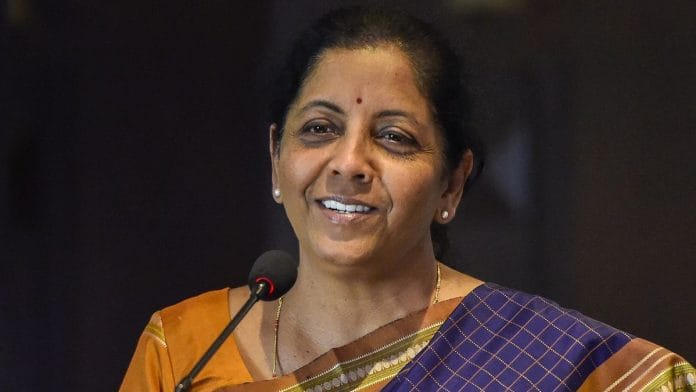The finance minister is holding pre-Budget meetings with specific groups. Invitees proffer dozens of ideas at such meetings, from good to bad and positively zany. Inevitably, therefore, very few of the suggestions aired at such meetings make their way into any Budget. But finance ministers can and do get influenced by the kind of issues that are raised since they are seen to indicate what people, in general, are concerned about — whether inflation or the deficit or economic growth. This time may be no different.
The fiscal situation is stressed (when is it not?!), economic growth has slowed, tax revenue has fallen short and the deficit is high if it is properly accounted. Government debt too is about 20 per cent higher than it should be, and fresh borrowing is swallowing up almost all of the household savings (partly because these savings have shrunk). Almost no household savings are therefore available to the private sector. Naturally, the Reserve Bank finds it difficult to force down interest rates in the market. On account of both the shortage of funds as well as their cost, investment has suffered.

The average rate of inflation has come down over the years from 7 per cent to 3 per cent, but savings schemes such as the provident funds continue to offer zero-risk, tax-free returns of more than 8 per cent. This is ridiculously high and out of line with the money market. Naturally, real lending rates (ie after adjustment for inflation) are also among the highest in the world. If the government wants interest rates to fall and facilitate private investment, among the things it has to do is remove tax incentives on small savings. On the spending side, it should be doing as little as possible.
Neither bit of advice is what a newly elected government, with a massive mandate and promises to keep, wants to hear. Compared to last year, new or larger commitments for this year already include the cost of Ayushman Bharat and the Rs 6,000 annual payout to all farmers — at a time when tax revenue is well short of the Budget numbers. Defence spending has been squeezed over the years and, as the finance minister would know from her previous perch in the defence ministry, the forces make do with lots of obsolete equipment. Further neglect could prove costly. Then, various unpaid bills from last year have to be paid. The approach to the expenditure side of the Budget, therefore, has to be one of extreme moderation. Any new or additional expenditure must be limited to the extent of matching savings under other heads. Such savings are always possible.
Also read: Amid narrative of change, Modi is bringing a preservation of the status quo
On the revenue side, the room for raising fresh taxes is limited in a slowing economy. The hard fact is that there is no fiscal space for the finance minister to manoeuvre — other than what will become available from the Reserve Bank through the transfer of what is deemed to be its excess reserves. Given that the financial sector’s troubles continue to impact economic activity, and the cleaning up of balance sheets is still a work in progress, the RBI windfall should be used to re-capitalise government-owned banks, and/or provide a special finance window for otherwise sound shadow banks that face liquidity problems because their existing sources of funding have dried up.
The best strategy would be for the minister to state the reality upfront (honest acceptance of the facts can be reassuring). She should make clear that she is playing a five-year Test match, not a one-day event. Her focus, therefore, should be on restoring fiscal sanctity and control (which financial markets will welcome), while energising her audience with reform policy initiatives for the long term. The subsidy bill can be tamed by reforming the public food procurement system; there is no need for an expensive buffer stock when each year delivers a grain surplus. And infrastructure investment can be funded by hawking existing assets (roads, discoms, etc) to long-term investors in operation and maintenance contracts, and using the money thus garnered to create new assets where the initial project risk is assumed by the government.
By Special Arrangement with Business Standard
Also read: PM Modi cannot continue to neglect macro-economic issues







“ India should not live in a ‘make believe’ world” – this is the moral of this excellent article. The author has beautifully summarised the essence of the current economic scenario in a concise and precise manner. The first task of the newly elected government is to recognise and accept the hard ground realities. Instead, if it makes a wishful thinking of aspiring to double India’s GDP in the next five years, it will be an illusory exercise. Simple arithmetic tells us that it requires CAGR of around 14.87% to achieve this miracle. This is simply not possible. Let us consider the economic history of China. Since opening up to foreign trade and investment and implementing free-market reforms in 1979, China has been among the world’s fastest-growing economies, with real annual gross domestic product (GDP) growth averaging 9.5% through 2017, a pace described by the World Bank as “the fastest sustained expansion by a major economy in history.” Such growth has enabled China, on average, to double its GDP every eight years and helped raise an estimated 800 million people out of poverty. As China’s economy has matured, its real GDP growth has slowed significantly, from 14.2% in 2007 to 6.9% in 2017, and that growth, is projected by the International Monetary Fund (IMF) to fall to 5.8% by 2022. The Chinese government has embraced slower economic growing, referring to it as the “new normal” and acknowledging the need for China to embrace a new growth model that relies less on fixed investment and exporting, and more on private consumption, services, and innovation, to drive economic growth. China is now planning to double its GDP in the ten years period from 2010 to 2020. India should learn from China and let us hope that this hard realism is reflected in the budget.
That is what the economic survey that is released before every budget is meant to do. It is not the FM’s budget’s job to do this. It is the job of CEA’s economic survey that is released before every budget.
In the 67 years that the sun seldom shone on India, the RBI patiently accumulated trillions in reserves, some genuine, others notional, ie, through revaluation of gold and forex. Now after five years of superb macroeconomic management, that is the only cushion available to pour more good money down the sink – “ recapitalisation “ – because we still cannot summon the courage to privatise the PSBs in the golden anniversary year of nationalisation. 2. Why do the few percentage points of real interest that prudent, thrifty middle class families earn on their small savings so hurt our version of Wall Street ? Compare this with what the micro finance companies – whom we regard as a great Innovation in financial inclusion – charge, or PE firms from abroad, when they invested in Indian real estate some years ago, were shooting for. Capital is scarce in India and should be priced correctly. Rate cuts is the only mantra we hear to revive a sickly economy. 3. Whether the Budget will unveil a bold reformist vision one cannot say. However, whether or not we come clean on the numbers, the veil has fallen. This is a second innings by the same team. The runs scored, wickets taken by the same players in the first are a matter of record. Ab toh UPA ko blame karna bhi delusional sound karts hai. So let us get on with the job of breathing life into the economy with a minimum of fuss and showmanship.